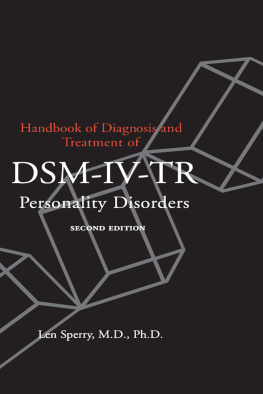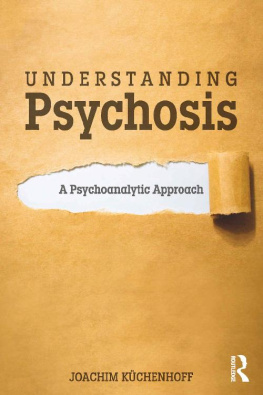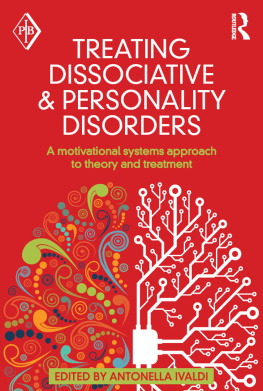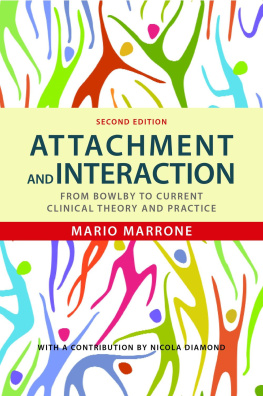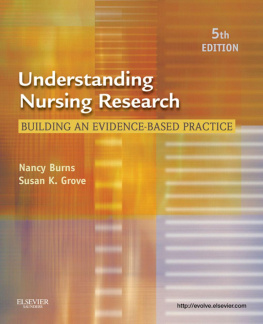Psychoanalytic
Diagnosis
Understanding Personality Structure in the Clinical Process

Nancy McWilliams

THE GUILFORD PRESS
New York London
Epub Edition ISBN: 9781609184988
2011 The Guilford Press
A Division of Guilford Publications, Inc.
72 Spring Street, New York, NY 10012
www.guilford.com
All rights reserved
No part of this book may be reproduced, translated, stored in a retrieval system, or transmitted, in any form or by any means, electronic, mechanical, photocopying, microfilming, recording, or otherwise, without written permission from the Publisher.
Last digit is print number: 9 8 7 6 5 4 3 2 1
Library of Congress Cataloging-in-Publication Data
McWilliams, Nancy.
Psychoanalytic diagnosis : understanding personality structure in the clinical process / Nancy McWilliams. 2nd ed.
p.; cm.
Includes bibliographical references and index.
ISBN 978-1-60918-494-0 (hardcover : alk. paper)
1. Typology (Psychology) 2. Personality assessment. 3. Personality development. I. Title.
[DNLM: 1. Personality Disordersdiagnosis. 2. Personality Assessment. 3. Personality Disorderstherapy. 4. Psychoanalytic Therapy. WM 460.5.P3]
RC489.T95M38 2011
616.8917dc22
2011002833
In grateful memory
Howard Gordon Riley
Millicent Wood Riley
Jane Ayers Riley
About the Author
Nancy McWilliams, PhD, teaches in the Graduate School of Applied and Professional Psychology at Rutgers, The State University of New Jersey, and has a private practice in Flemington, New Jersey. She is a former president of the Division of Psychoanalysis (39) of the American Psychological Association and is on the editorial board of Psychoanalytic Psychology. Dr. McWilliamss books have been translated into 14 languages, and she has lectured widely both nationally and internationally. She is a recipient of honors including the Rosalee Weiss Award for contributions to practice from the Division of Independent Practitioners of the American Psychological Association; Honorary Membership in the American Psychoanalytic Association; and the Robert S. Wallerstein Visiting Scholar Lectureship in Psychotherapy and Psychoanalysis at the University of California, San Francisco. A graduate of the National Psychological Association for Psychoanalysis, Dr. McWilliams is also affiliated with the Center for Psychoanalysis and Psychotherapy of New Jersey and the National Training Program of the National Institute for the Psychotherapies in New York City.
Preface
W hen I originally wrote Psychoanalytic Diagnosis, I knew from my experience as a teacher that students and early-career psychotherapists needed exposure to the inferential, dimensional, contextual, biopsychosocial kind of diagnosis that had preceded the era inaugurated by the 1980 publication of the third edition of the Diagnostic and Statistical Manual of Mental Disorders (DSM-III) of the American Psychiatric Association. In particular, I wanted to keep alive the sensibility that represented decades of clinical experience and conversation, in which human beings have been seen as complex wholes rather than as collections of comorbid symptoms. I also saw how confusing it was, even to psychodynamically oriented students, to try to master the bewildering diversity of language, metaphor, and theoretical emphasis that comprises the psychoanalytic tradition. The need for a synthesis of the sprawling and contentious history of analytic theory, as it pertains to understanding ones individual patients, was evident.
In the early 1990s I was also nourishing a faint hope that the book would have some influence on mental health policy and on our culturally shared conception of psychotherapy, which were beginning to be transformed in disturbing ways. No such luck: The breadth and depth of change since then have been stunning. For a host of interacting reasons, psychodynamicand even broadly humanistic (see Cain, 2010)ways of understanding and treating people have become devalued, and the likelihood that a patient with significant character pathology, the hallmark of most psychodynamic treatment, will find genuine, lasting help in the mental health system has, in my view, plummeted. As the cognitive-behavioral movement continues to develop, some of its practitioners have become as upset with these developments as analytic therapists have been; my CBT-oriented colleague Milton Spett recently complained (e-mail communication, May 28, 2010), in reaction to this trend, We treat patients, not disorders.
Political and economic forces account for much of this change (see Mayes & Horwitz, 2005, for the political history of the paradigm shift in the area of mental illness from broad, etiologically defined entities that were continuous with normality to symptom-based, categorical diseases [p. 249]). At least in the United States, corporate interestsmost notably those of insurance companies and the pharmaceutical industryhave sweepingly reshaped and thus redefined psychotherapy in line with their aims: maximized profits. In the service of short-term cost control, there has been a reversal of decades-long progress in helping individuals with complex personality problemsnot because we lack skill in helping them, but because insurers, having marketed their managed-care plans to employers with the claim that they would provide comprehensive mental health coverage, later declined arbitrarily to cover Axis II conditions.
Meanwhile, drug companies have a substantial stake in construing psychological problems as discrete, reified illnesses so that they can market medications that treat each condition. Consequently, the emphasis is no longer on the deep healing of pervasive personal struggles, but on the circumscribed effort to change behaviors that interfere with smooth functioning in work or school. When I wrote the first edition of this book, I did not realize how much graver the prognosis for person-oriented (as opposed to symptom-oriented) therapy would become in the years after its publication (see McWilliams, 2005a, for a more detailed lament).
The climate in which therapists in my country currently practice is much more inclement than in 1994. Contemporary practitioners are besieged with suffering people who need intensive, long-term care (Can anyone convincingly argue that psychopathology is decreasing in the context of contemporary social, political, economic, and technological changes?). They may be expected to see patients every 2 weeks, or even less frequently, and to carry caseloads so large that genuine connection with and concern for ones individual clients is impossible. They are overwhelmed with paperwork, with efforts to justify even the most unambitious treatment to anonymous employees of insurance companies, with translating their efforts to help clients build agentic selves into slogans such as progress on target behaviors. Official diagnosis under such pressures can often be cynical in spirit and thus in function, as clinicians label patients in ways that will permit insurance coverage and yet stigmatize them as little as possible.
Ironically, the current state of affairs makes it more rather than less important for psychotherapists to have a heuristic but scientifically enlightened sense of the overall psychology of each patient. If one wants to have a short-term impact, one had better have some expedited basis for predicting whether a person will react to a sympathetic comment with relief, with devaluation of the therapist, or with a devastating sense of not being understood. Hence, there is an even greater need now than in 1994 to reassert the value of personality diagnosis that is inferential, contextual, dimensional, and appreciative of the subjective experience of the patient. My role in developing the
Next page


